
The global fixed interest market has a unique and multi-faceted role in both financial markets and the real economy.
Fixed interest rates, or yields, directly impact the real economy due to their influence on the cost of borrowing. Government bond yields represent the cost of borrowing to fund government budget deficits, but fixed interest rates also heavily influence the cost of borrowing for large businesses (corporate bonds) and households, particularly in the US, where mortgages are overwhelmingly fixed rate. The rise in US bond yields this year has significantly dampened both house prices and housing activity. Higher bond yields, combined with higher policy rates, have spurred concerns around the US economy and the 2023 earnings outlook, with even the Fed conceding that a US recession will now be difficult to avoid.
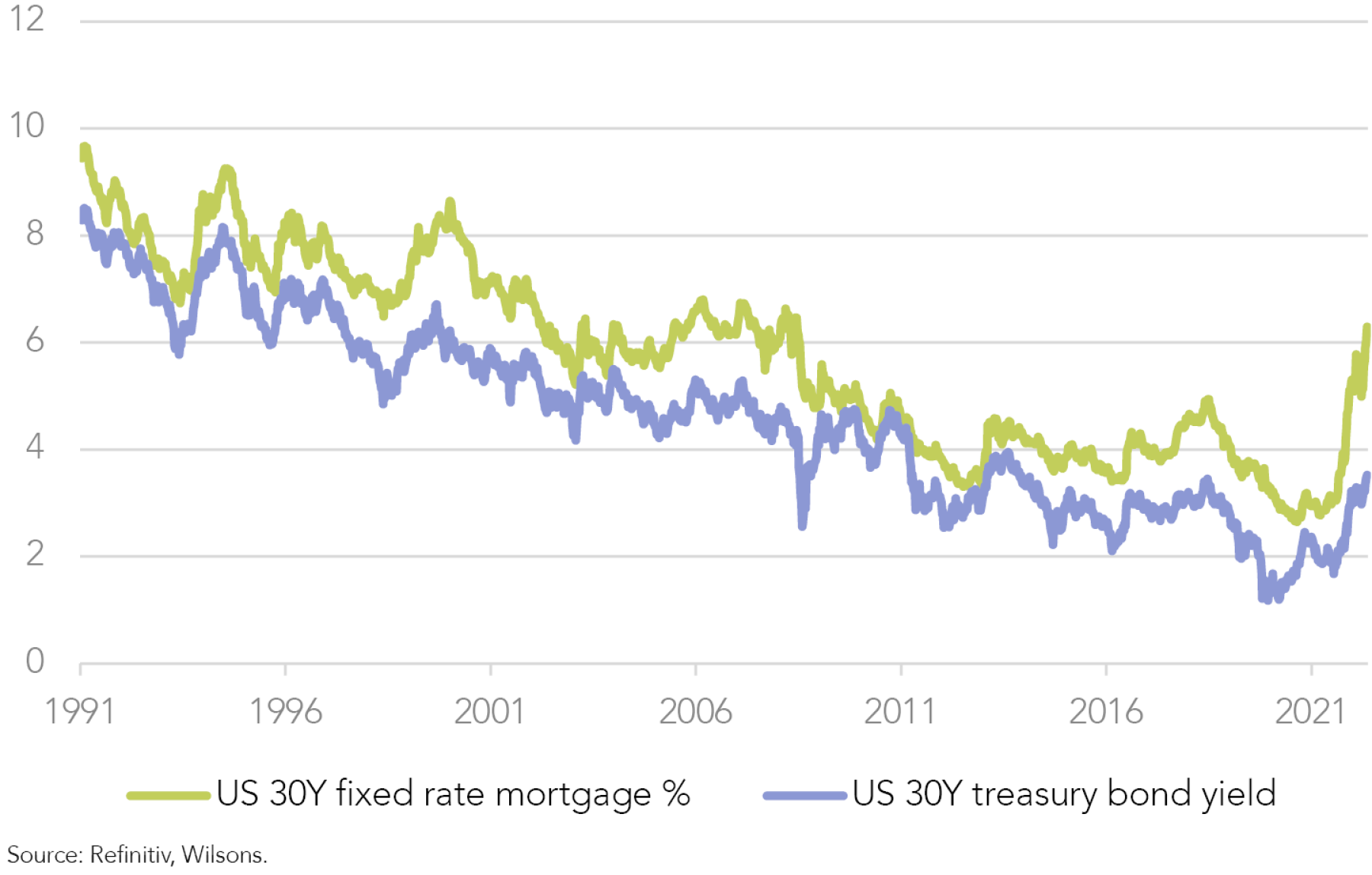
Bonds are the equity market’s discount rate
The long-term bond rate (most commonly the 10-year yield) is also the underlying discount rate for a range of risk assets including equities. Higher bond yields, all things equal, lead to lower equity valuations, as we have witnessed this year. This is particularly the case for the “long duration” equities prevalent in the US equity market.
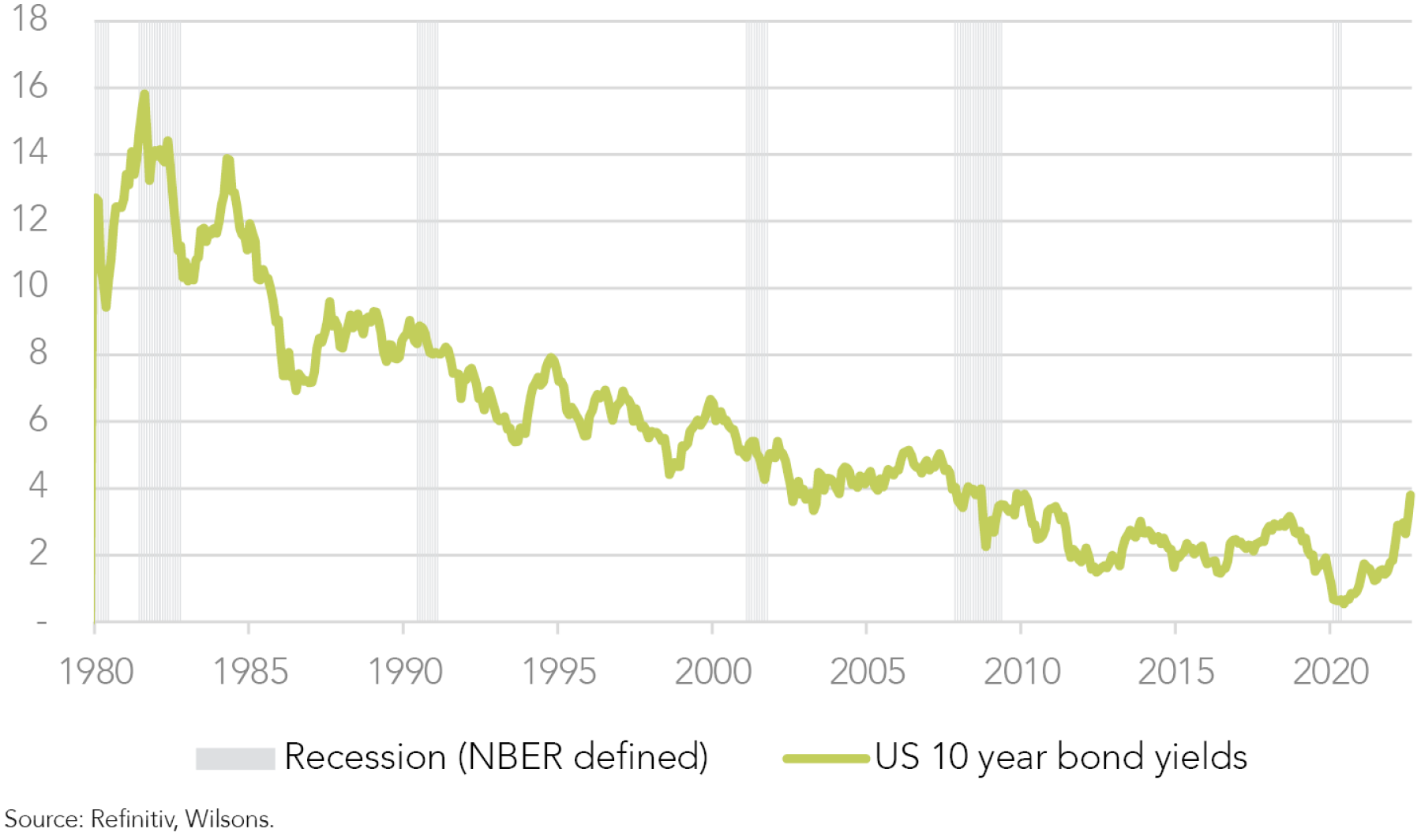
Fixed interest still important for multi-asset portfolios
Apart from its role in influencing both real economic activity and risk asset valuations, the fixed interest market is, of course, a huge asset class in its own right – one that has traditionally held a key role as a portfolio diversifier alongside growth asset exposures.
This year, fixed interest markets have been sold down aggressively across the globe, with rising bond yields pressuring the capital values of fixed interest portfolios. Indeed, 2022 represents the worst year for domestic investors since 1994.
The poor bond returns experienced in 2022 mean that fixed interest has not played its traditional diversification or hedging role in multi-asset portfolios. In other words, bond and equity returns have been positively rather than negatively correlated.
The upside for investors is that much better yields are now on offer. We upgraded fixed interest in late-June from significantly underweight to close to neutral.
Since then, domestic long bond yields have oscillated in a range but are essentially flat.
As already discussed, the potential upside from higher bond yields is better prospective returns for investors and higher probability that bonds fulfill their traditional portfolio diversification role going forward. Just how good bond returns prove to be over the next few years will depend on where bond yields settle over the medium-term.
What’s Fair for Fixed Interest?
Estimating the fair value for bonds is complex and not without a degree of uncertainty, despite the reputation of government bonds as the risk-free rate.
On a long-term basis, the level of interest rates across the yield curve is a composite of future inflation expectations (equivalent to the life of the bond in question) and a real return.
From a slightly different perspective, long bond rates are linked to the level of shorter-term interest rates, although the relative levels of short- and longer-term interest rates can diverge significantly through the course of an economic cycle.
The long bond is, in effect, the expected path of short-term interest rates in addition to a term or risk premium. As a result, the yield curve is typically positively sloped, with long rates showing an interest rate premium to short-term interest rates. While an upwardly sloping yield curve is “normal”, the yield curve can flatten and even invert in periods of policy rate tightening, as it has done recently in the US.
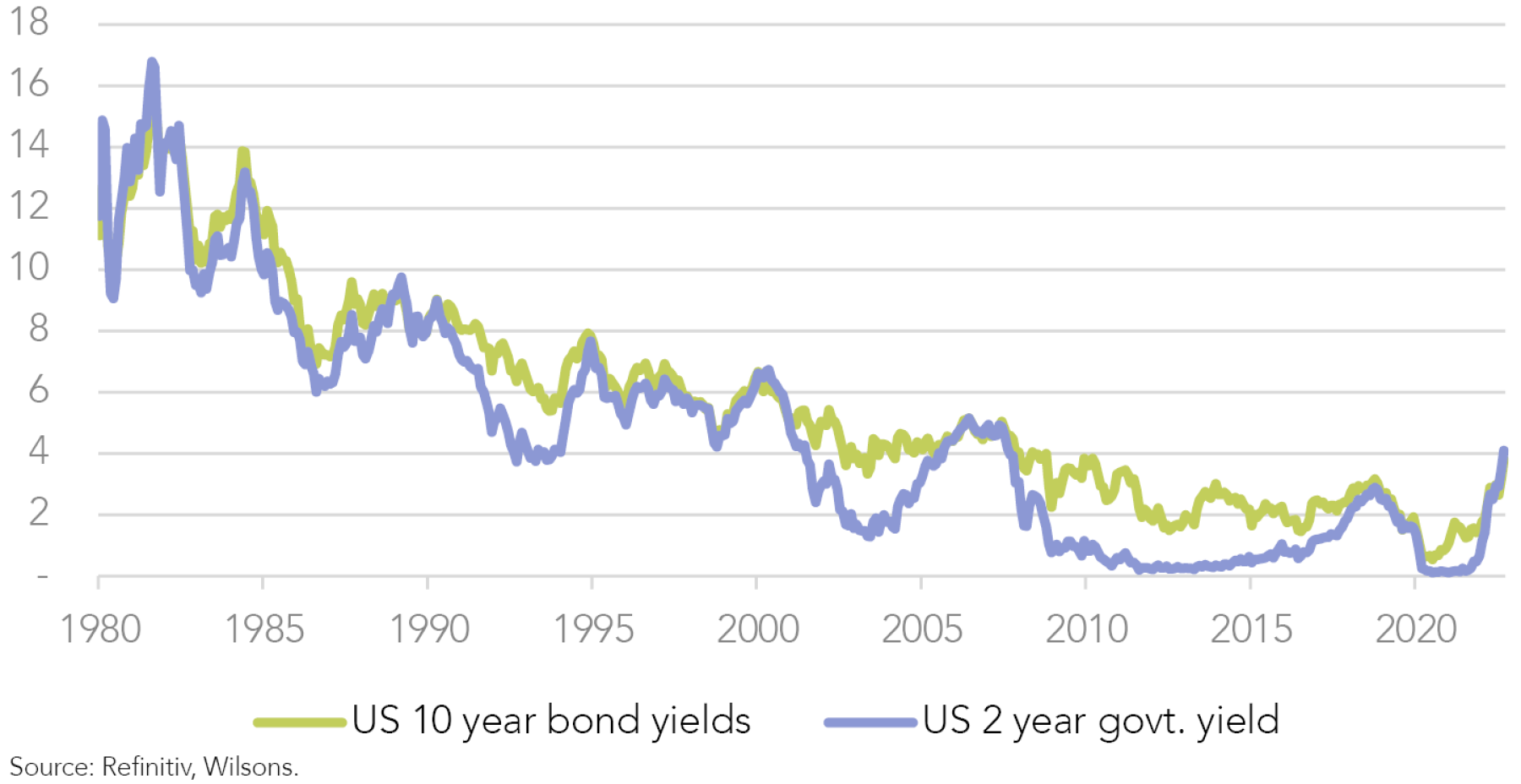
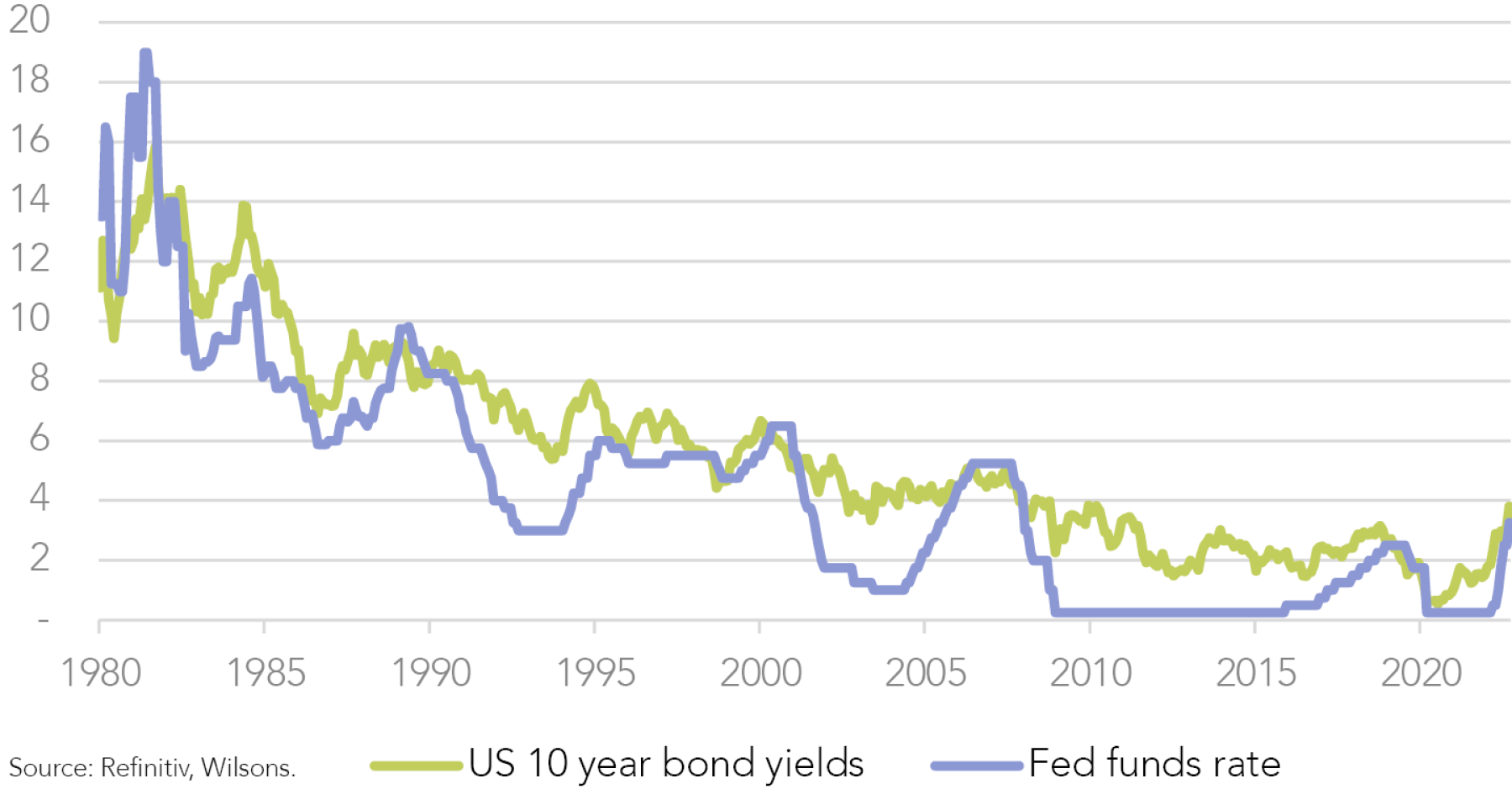
As short-term cash or policy interest rates are used by central banks in an attempt to “smooth” the business cycle, they can depart from long-term equilibrium levels significantly. However, in determining a fair value for bond yields, the expected equilibrium policy rate or neutral rate is important.
Long-term bond yields tend to be influenced by this estimate of the long-term “neutral” policy rate, although they can also be influenced by the level of short-term bond yields – that is, 2- or 3-year bond yields, which, in turn, are heavily influenced by near-term expectations for central bank policy rates.
At present, 2-year yields in the US are the highest since 2007, as the market expects cash rates to rise sharply in the near-term (above 4% by year end, with a peak of close to 4.6% mid next year).
For this reason, the yield curve is inverted with 1- and 2-year yields above the 10-year yield. These higher short-term and medium-term rates are likely dragging up the long-term interest rate. In this respect, the yield curve is a bit like a daisy chain.
While the US Fed is currently in an aggressive tightening phase in its efforts to tame inflation, the Fed still estimates the neutral rate is 2.5%. This is an estimate – and not a certainty – but it does suggest there is now potentially good long-term value in bonds. Allowing for a reasonably generous term or risk premium of 50 basis points suggests long-term fair value for 10-year US bonds of ~3%.
Of course, the neutral rate could prove to be higher. The Fed over-stated the neutral rate for more than 10 years pre-COVID. It is possible they are now underestimating the neutral rate, although the recent slowing of the US economy suggests we may have already passed the neutral level in terms of the overall yield curve.
Applying some buffer to the neutral cash rate, say 3%, and again adding a term premium suggests an upper-end fair value of 3.5%, so we believe a range of 3.0-3.5% is a reasonable estimate of the US 10-year bond yield (the current level is 3.8%).
This does not mean bond yields cannot trend higher in the short-term as they are dragged up by short-term rate expectations but we think the medium-term risks are likely to the downside. The influence of quantitative tightening (QT) also introduces a degree of uncertainty as to where bond yields trend over the medium-term. It is possible that the process of unwinding the Fed’s balance sheet may place upward pressure on bond yields along the curve. We do note, however, that the influence of the 2014 -19 QT process on bond yields was rather inconclusive. Bond yields traded in a range through this period with no clear influence from QT.
QT is also potentially “reflexive” in its impact on bond yields. By this, we mean that any significant rise in long-rates driven by the QT process would have a potentially negative impact on the US economy. This could, in turn, prompt the Fed to proceed more cautiously, either with its QT program, or its cash rate tightening process. This policy shift could, in turn, place downward pressure on bond yields.
Our base case is to expect that QT could place some moderate upward pressure on long-term interest rates, although the exact level of that pressure is very hard to quantify. We think the paths of inflation and economic growth are likely to be bigger drivers of where bond yields trend over the next 1-2 years. Indeed, a scenario where the inflation rate falls back significantly but the US lapses into recession (i.e., the Fed overtightens) could drive a strong rally in the US long bond over the coming 12-18 months. We note that US 10-year bond yields have almost always fallen in US recessions. Hence, bonds could regain their traditional insurance role in multi-asset portfolios if economic activity and inflation slow significantly over the coming year.
Local versus Global Fixed Interest
Australian yields are influenced by the path of US interest rates (much like the share-market), but they are also impacted by our own central bank policy cycle and the market’s estimate of the domestic neutral rate.
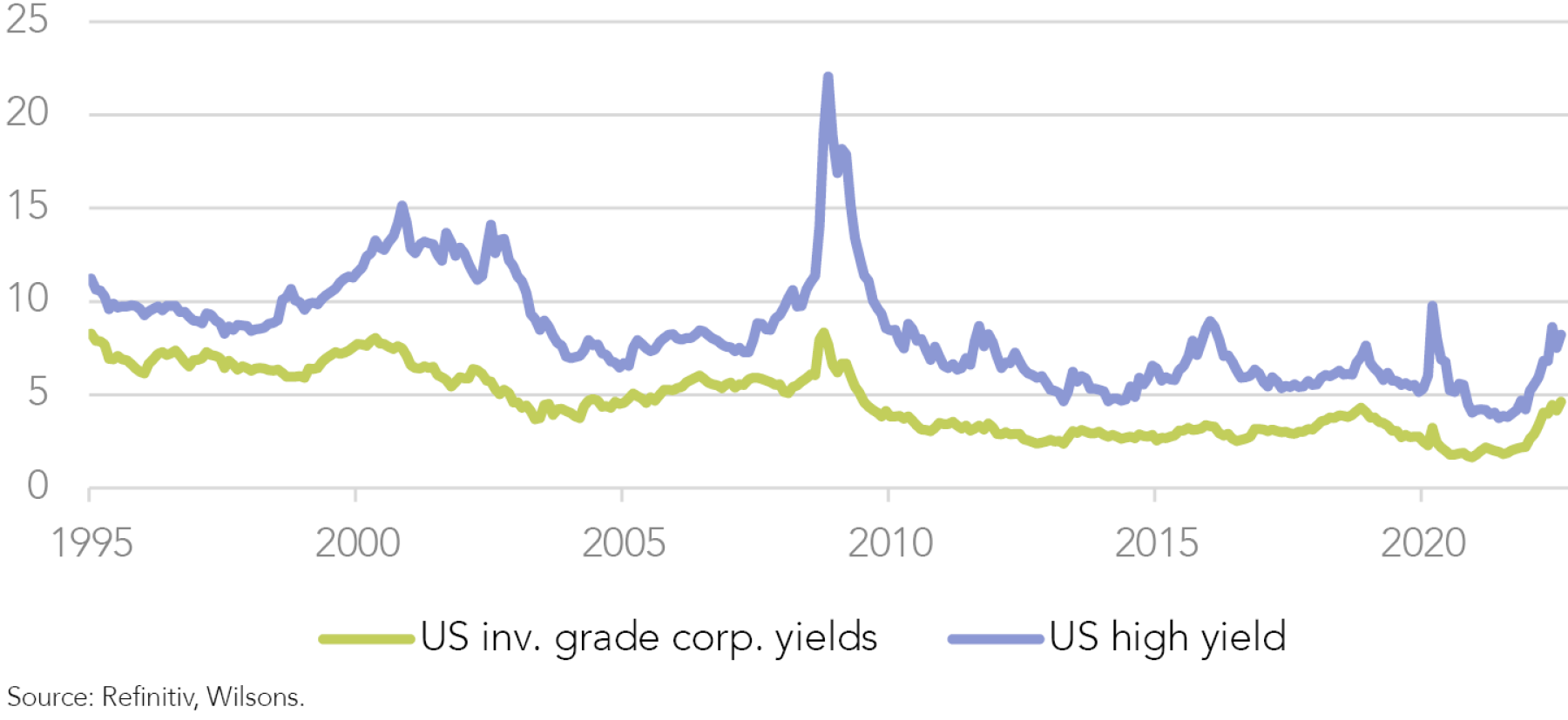
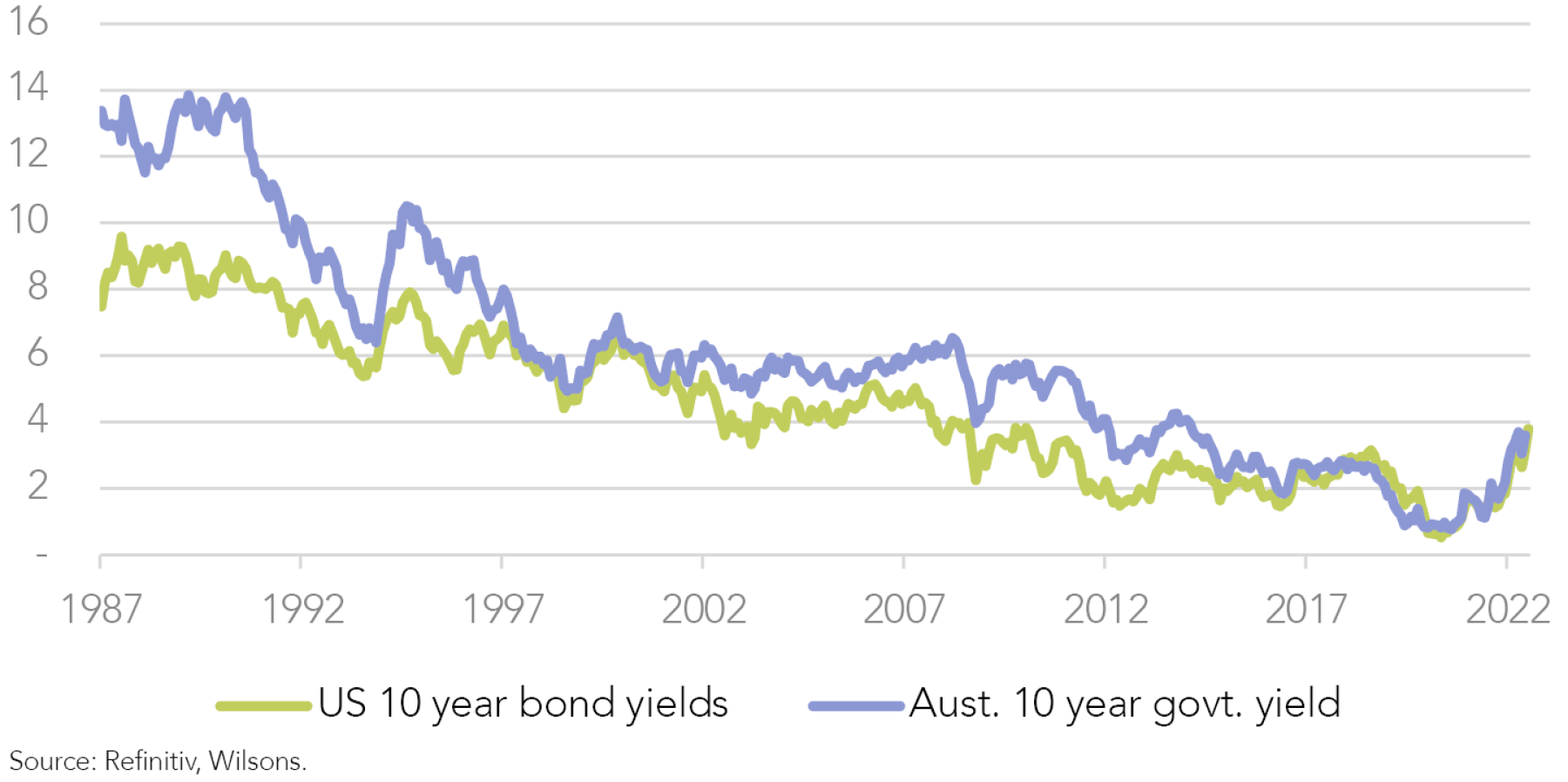
Like the Fed, the Reserve Bank of Australia (RBA) thinks neutral is around 2.5%. Once again, this estimate may prove too low, although we do not think it will prove massively wide of the mark given the high level of household gearing. The fact that the Australian economy has shown significant resilience so far is something of a moot point in that the policy rate has only just hit 2.35%, which is still below the RBA’s estimate of neutral. So, the true test of how higher rates impact the Australian economy lies ahead.
The domestic long-term bond yield has typically traded at a spread to the US, though this has diminished over the long-term. We note that Australia’s recent premium on 10-year yields has fallen back to parity. It is not without precedent to trade at a discount. The fair value for domestic bonds will depend on where Australia’s neutral rate settles. We think the risk is that the domestic neutral rate could be a little bit lower than the US, given higher household gearing levels domestically. In spite of this view we assume a parity for long-term bond yields due to Australia’s position as a peripheral bond market relative to the US.
With a 3.0-3.5% fair value estimate against a current level of 3.8%, local 10-year bonds currently look on the cheap side of fair in our view. This suggests bond yields are now reasonable in terms of long-term value. Of course, government bond yields are only part of the fixed interest opportunity set. Credit markets represent a large additional fixed rate universe and the floating rate credit markets are also vast.
We plan to explore credit markets in a separate note, though we observe that spreads have increased in addition to the rise in the underlying risk-free rate. So, investment grade fixed interest is also looking more attractive. The Australian economy is in good shape and we are comfortable with quality corporate credit. Floating rate credit is also looking more appealing given the actual and expected rise in short-term interest rates.
Fixed Interest Starting to Add Up
Fixed interest markets have been unattractive in recent years due to very low yields. Moreover, fixed interest has been a very poor performer over the last year as yields have risen sharply, pressuring capital values. Going forward, with the significant lift in yields, fixed interest now represents a reasonable investment destination from a risk-return perspective. Fixed interest investments are also more likely to fulfill their role as a portfolio diversifier as growth risks build. Of course, markets can depart from fair value in the short run, but our assessment suggests that fixed interest presents a reasonable medium- to long-term entry point, notwithstanding the risk of a cyclical overshoot. Indeed, with recession risk rising in the US, the cyclical overshoot risk for yields may well prove to be the downside (good for bonds). With cash rates rising, floating rate credit markets are also looking increasingly attractive, despite the expected slowdown in the domestic economy over the coming year.

Written by
David Cassidy, Head of Investment Strategy
David is one of Australia’s leading investment strategists.
About Wilsons Advisory: Wilsons Advisory is a financial advisory firm focused on delivering strategic and investment advice for people with ambition – whether they be a private investor, corporate, fund manager or global institution. Its client-first, whole of firm approach allows Wilsons Advisory to partner with clients for the long-term and provide the wide range of financial and advisory services they may require throughout their financial future. Wilsons Advisory is staff-owned and has offices across Australia.
Disclaimer: This communication has been prepared by Wilsons Advisory and Stockbroking Limited (ACN 010 529 665; AFSL 238375) and/or Wilsons Corporate Finance Limited (ACN 057 547 323; AFSL 238383) (collectively “Wilsons Advisory”). It is being supplied to you solely for your information and no action should be taken on the basis of or in reliance on this communication. To the extent that any information prepared by Wilsons Advisory contains a financial product advice, it is general advice only and has been prepared by Wilsons Advisory without reference to your objectives, financial situation or needs. You should consider the appropriateness of the advice in light of your own objectives, financial situation and needs before following or relying on the advice. You should also obtain a copy of, and consider, any relevant disclosure document before making any decision to acquire or dispose of a financial product. Wilsons Advisory's Financial Services Guide is available at wilsonsadvisory.com.au/disclosures.
All investments carry risk. Different investment strategies can carry different levels of risk, depending on the assets that make up that strategy. The value of investments and the level of returns will vary. Future returns may differ from past returns and past performance is not a reliable guide to future performance. On that basis, any advice should not be relied on to make any investment decisions without first consulting with your financial adviser. If you do not currently have an adviser, please contact us and we would be happy to connect you with a Wilsons Advisory representative.
To the extent that any specific documents or products are referred to, please also ensure that you obtain the relevant disclosure documents such as Product Disclosure Statement(s), Prospectus(es) and Investment Program(s) before considering any related investments.
Wilsons Advisory and their associates may have received and may continue to receive fees from any company or companies referred to in this communication (the “Companies”) in relation to corporate advisory, underwriting or other professional investment services. Please see relevant Wilsons Advisory disclosures at www.wilsonsadvisory.com.au/disclosures.
